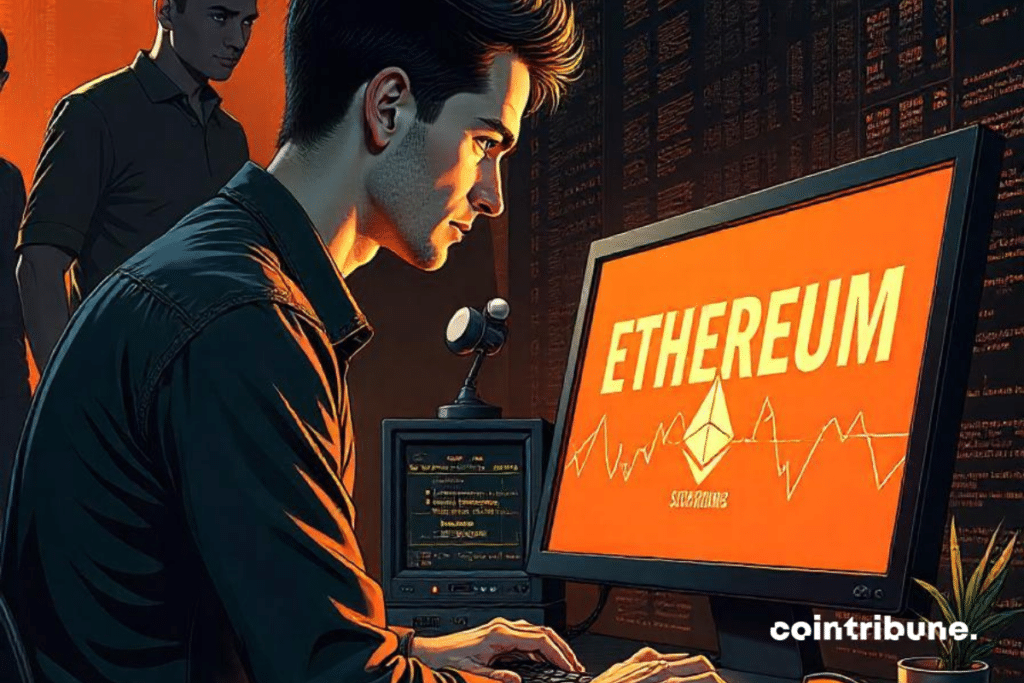Vitalik Buterin Reveals The Hidden Risks Of The Ethereum Protocol
The co-founder of Ethereum, Vitalik Buterin, continues his reflection on the evolution of the network with a new detailed blog article. He addresses the challenges of centralization, value extraction, and transaction fees, proposing ambitious solutions to sustain the crypto ecosystem.

A Global Approach to Ethereum’s Challenges
Since the beginning of October, Vitalik Buterin has multiplied publications on X, detailing the crucial issues of the Ethereum network and the solutions considered. Today, in an article entitled “Possible Futures of the Ethereum Protocol, Part 3: The Scourge” published on his personal blog, he delved into the centralization of block construction and the economic issues related to staking.
These reflections are part of a broader context of network optimization. Indeed, on October 11, Buterin had already addressed the thorny issue of transaction fees on layers 1 and 2. This problem is even more pressing since transaction fees have not decreased despite various scaling solutions already implemented.
In parallel, the announcement of the next Pectra fork, scheduled for late 2024 or early 2025, complements this comprehensive vision. This major update aims to optimize transaction fees for layer 2 (L2) scaling solutions, a crucial issue for Ethereum’s scalability and competitiveness.
In this new article, Buterin identifies two major challenges: the centralization of block construction and the economic problems related to staking. He notably highlights the risks associated with the current MEVBoost system, which could concentrate power in the hands of a few specialized actors. Economically, he worries about the consequences of a scenario where almost all ETH would be staked.
These reflections are in line with his recent proposals to balance fees between layers 1 and 2 of the network. Buterin seeks to create a coherent ecosystem capable of handling increased traffic without compromising its accessibility or decentralization.
Innovative Technical Solutions
In the face of these challenges, Vitalik Buterin outlines several ambitious technical avenues. For block construction, he proposes a hybrid approach combining forced inclusion lists (FOCIL) and an auction system. Regarding staking economics, he envisions capping rewards or establishing a two-tier system.
These proposals follow the EIP-7762, mentioned in his previous article, which aims to make “blob” fees more predictable. Buterin also emphasizes the importance of capturing maximum extractable value (MEV) revenues at the protocol level, an issue closely linked to block construction.
In parallel, the Ethereum co-founder encourages the development of application-level solutions, such as squad staking or decentralized block construction markets. These approaches complement the previously mentioned “fee-based rollups.”
In summary, Vitalik Buterin’s proposals, combined with the Pectra fork, demonstrate a holistic approach to evolving Ethereum. By simultaneously addressing fees, centralization, and staking economics, the co-founder proposes an ambitious roadmap to tackle the challenges of massive network adoption. The challenge now is to turn these reflections into concrete solutions and implement them effectively to sustain the Ethereum ecosystem and strengthen its position in the crypto landscape.
Maximize your Cointribune experience with our "Read to Earn" program! For every article you read, earn points and access exclusive rewards. Sign up now and start earning benefits.
Passionné par le Bitcoin, j'aime explorer les méandres de la blockchain et des cryptos et je partage mes découvertes avec la communauté. Mon rêve est de vivre dans un monde où la vie privée et la liberté financière sont garanties pour tous, et je crois fermement que Bitcoin est l'outil qui peut rendre cela possible.
The views, thoughts, and opinions expressed in this article belong solely to the author, and should not be taken as investment advice. Do your own research before taking any investment decisions.